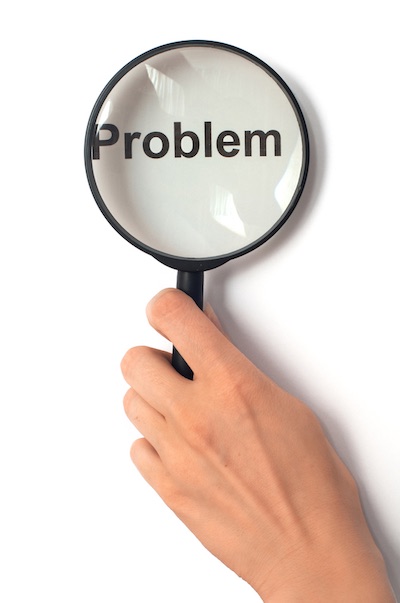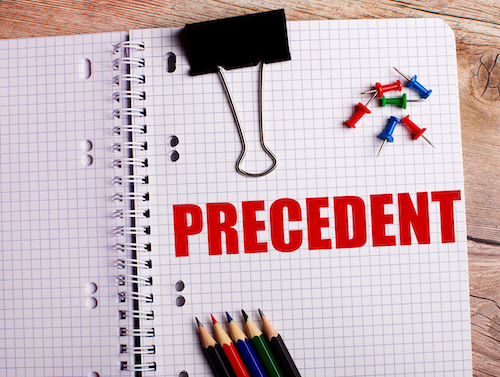 As you may have already heard, effective — October 2, 2012 — the United States Patent and Trademark Office will be adding a significant volume of newly testable material to the Office’s Registration Exam (i.e., the “Patent Bar Exam”). Specifically, the USPTO has added six new testable documents to the Patent Bar Exam, with these newly testable documents coming in the form of six Federal Register Notices. All of this is thanks to the America Invents Act (AIA). See AIA Phase 2 Implemented.
As you may have already heard, effective — October 2, 2012 — the United States Patent and Trademark Office will be adding a significant volume of newly testable material to the Office’s Registration Exam (i.e., the “Patent Bar Exam”). Specifically, the USPTO has added six new testable documents to the Patent Bar Exam, with these newly testable documents coming in the form of six Federal Register Notices. All of this is thanks to the America Invents Act (AIA). See AIA Phase 2 Implemented.
Does this mean that the Patent Bar will become more difficult? The answer to that question isn’t a simply YES or NO. So let’s break this down into two different questions. (1) Will the questions be more difficult on the Patent Bar Exam? (2) Will it be more difficult to pass the Patent Bar Exam? While exam questions likely won’t get more difficult, it would be naive to believe the Patent Bar will not become much more difficult with the addition of complicated new rules that only add to the legal and regulatory rules administered by the USPTO.
Let’s go back to the first question about the questions on the Patent Bar. Once upon a time the Patent Office administered the Patent Bar Exam once or twice a year to thousands of would-be patent attorneys and patent agents across the country. The October 2003 exam was the last exam administered in this way. The USPTO changed the examination to an on-demand examination that is prepared by the Patent Office, but administered by Prometric. Because questions are randomly served from the database and no two people take the same exam the Patent Office had to normalize exam difficult someway, so they scored questions on a scale of 1 to 10 in terms of difficulty. This ensures that each person gets an exam that the Patent Office deems to be of the same level of difficulty. Thus, the new material will be fit into the database and appropriately evaluated. There will not suddenly be questions of 11 or 12 level of difficulty. So in this respect each question will not be more difficult, at least from the Patent Office perspective.
The more important question for students, however, is whether it will be more difficult to pass the Patent Bar Examination. The answer to that question is a resounding YES! In my experience teaching over the years, both for the PLI patent bar review course and at various law schools, whenever the amount of material a student needs to know increases it becomes more difficult to pass an exam. It is now necessary to spend more time studying and there are more rules and laws to learn. I can’t imagine how anyone could come to the conclusion that this will make for an easier exam.
[Patent-Bar]
What this newly testable material does do is increase the overall size of information you need to know to pass the Patent Bar Exam. The exam will still be 100 questions, but the amount of information that can now be tested has significantly increased. The only thing removed is inter partes reexamination, but everything else is additional information. Even the new oath and declaration rules apply prospectively, not retroactively to applications file on or before September 15, 2012.
We also know from past history that when the Patent Office first starts to test new material they disproportionately weight it in the database of questions so you are likely to be heavily tested. We anticipate that the newly testable material will generate between 15 to 20 questions on the Patent Bar Exam starting immediately, or nearly immediately. Given that one of the new pieces of information are new rules relative to oaths or declarations, which must be filed in every application, it is easy to see that the new material is of great importance and likely to be tested in a meaningful way. Many of the other rules packages that will be tested will also easily lend themselves to questions, some easy, some more difficult.
This newly testable information comes on the heels of AIA phase 1 and KSR, Bilski and 112 Guidelines that all started to become tested in April 2011. We anticipate that the newly testable material that has come online since April 2011 will make up approximately one-third of your exam. That is 3o-35 questions. This is of critical importance because there continue to be nefarious actors who are selling very old PLI patent bar review courses on eBay. If you purchase an old course that comes with CDs or DVDs you are buying a course that does not include any of the newly testable materials that have come online since April 2011, which means you are buying a course that focuses at most on 65-70% of what you will see on exam day. Given you need to achieve 70% to pass, there is realistically no way you can anticipate passing with an old course.
The new Patent Bar Exam is not a reason to panic, although it should be a substantial call to action. As you may know, the final phase of AIA will come online and go effective on March 16, 2013. We anticipate that Phase III of AIA will start to be tested by the USPTO at the beginning of April 2013. Phase III of the AIA is where the U.S. converts from first to invent to first to file. All the old first to invent rules will apply to any application filed on or before March 15, 2013, with first to file applying on and after March 16, 2013. This means that once again additional information will be added to what you need to know to pass the Patent Bar Exam, with none being taken away.
While we have only seen the proposed rules issued by the USPTO, our early estimate is that when first to file comes online it may result in as many as 25-30 new questions. While that may seem hard to believe, first to file fundamentally changes the definition of what is prior art, or in other words 102. Since any obviousness determination requires reliance on determining the appropriate prior art under 102, any 102 or 103 questions can and likely will be affected. This is a massive change to U.S. patent laws and one that the Patent Bar Examination will almost certainly test heavily. So if you can take and pass the Patent Bar before the end of March 2013 you will be saving yourself the headache of mountains of new material to learn.
I have been teaching the PLI patent bar review course for about 12 years, and in all that time we have always said if you take our course you should plan on spending 100 hours post-course (which we lay out for you with materials) to prepare for the exam. Effective October 2, 2012, if you take the PLI course you should plan on spending 120-130 hours post-course. That is what we are recommending to our students, which gives you some idea of the magnitude of the change.
If you are going to wait and take the Patent Bar exam until after first to file starts to be tested in April 2013, it is my guess that we will then be recommending our student to plan to spend 150-160 hours (or more) post-course. By then the number of AIA Phase II questions should diminish, but the examination will almost certainly be 50% to 60% on newly tested materials that have come online since April 2011.
Having said all this, there is NO need to panic. PLI already has a supplement for all these newly testable materials that come on line October 2, 2012. John White and I have been spending a lot of time working on the new materials and we have our game plan and marching orders moving forward. Exam level difficulty practice questions for these newly testable documents are complete, reviewed and thoroughly vetted. We will be writing more questions and continuing to refine our materials based on the feedback we receive. Lectures are being taped to be placed online. We already have our plan to begin working on first to file materials and questions. We are thoroughly on top of all of these changes and you can rest assured that if you buy a patent bar review course from PLI you will get everything you need to pass the exam. PLI also has one more live course scheduled for this year, which will take place in San Francisco, CA, from October 31 to November 4. Of course, you can always register for homestudy and do it at your own pace.
It is important to hear (and share) this message. The newly testable materials now and in the future will add a major additional time commitment. Anyone who tells you different is not being honest. The additional time you need to spend now — about 20-30 hours more compared with a few weeks ago — is a drop in the bucket compared to April 2012. The monumental changes that will come to the Patent Exam in the Spring, will change everything you have learned about prior art. Whatever you do, try to get the Exam behind you before the beginning of April 2013.

![[IPWatchdog Logo]](https://ipwatchdog.com/wp-content/themes/IPWatchdog%20-%202023/assets/images/temp/logo-small@2x.png)

![[Advertisement]](https://ipwatchdog.com/wp-content/uploads/2024/05/LexisNexis-May-16-2024-sidebar-700x500-1.jpg)
![[Advertisement]](https://ipwatchdog.com/wp-content/uploads/2024/04/Patent-Litigation-Masters-2024-sidebar-last-chance-700x500-1.jpg)
![[Advertisement]](https://ipwatchdog.com/wp-content/uploads/2024/05/Patent-Portfolio-Management-2024-sidebar-super-early-bird-with-button-700x500-1.jpg)
![[Advertisement]](https://ipwatchdog.com/wp-content/uploads/2024/05/Artificial-Intelligence-2024-Getting-AI-Patents-Allowed-sidebar-700x500-1.jpeg)

![[Advertisement]](https://ipwatchdog.com/wp-content/uploads/2021/12/WEBINAR-336-x-280-px.png)
![[Advertisement]](https://ipwatchdog.com/wp-content/uploads/2021/12/2021-Patent-Practice-on-Demand-recorded-Feb-2021-336-x-280.jpg)
![[Advertisement]](https://ipwatchdog.com/wp-content/uploads/2021/12/Ad-4-The-Invent-Patent-System™.png)







Join the Discussion
4 comments so far.
Gene Quinn
December 24, 2012 02:24 pmJavaid-
Not sure why you would ask that. PLI is a sponsor and I teach the PLI Patent Bar Review Course. That is made clear in many places throughout the website.
If you think this site is only about promoting PLI, which your comment incorrectly suggests, I invite you to review the several thousands of articles and tens of thousands of primary sources we have on our server. If you are familiar with IPWatchdog.com it will become clear that we are a professional publication that puts forth volumes of high quality information and analysis. If you don’t like what we have to offer you are, of course, free to try and find the quality of information we put out for free elsewhere.
-Gene
Javaid
December 24, 2012 01:36 amIs this a PLI promotion site?
EG
October 2, 2012 07:55 amPaul,
What you say is very true. As your partner Brian will tell you, we both took the PLI course back in the 70’s and we had to learn not only how to draft claims, but also respond to an Office Action (one half of the USPTO exam back then, the other half being responding with essays to questions on procedure/practice).
Paul Cole
October 1, 2012 03:55 pmI believe that there used to be a practical test in the drafting of patents, but this topic is not covered in the US exam. So if a student knows the law and procedure, he or she can pass the patent bar without much knowledge of how to structure patent specifications and write claims.
In UK and Germany at least, there are testing examinations in these practical skills at national level, and the EPO examination is also predominatly practice-based. Generally speaking students take these exams after some 2-3 years in the profession, before which their work is closely supervised and practical skills are learned while working in an attorney firm or department.
And anyone who is not thoroughly familiar with the KSR Guidelines and the major cases cited in them should not be practising without supervision.